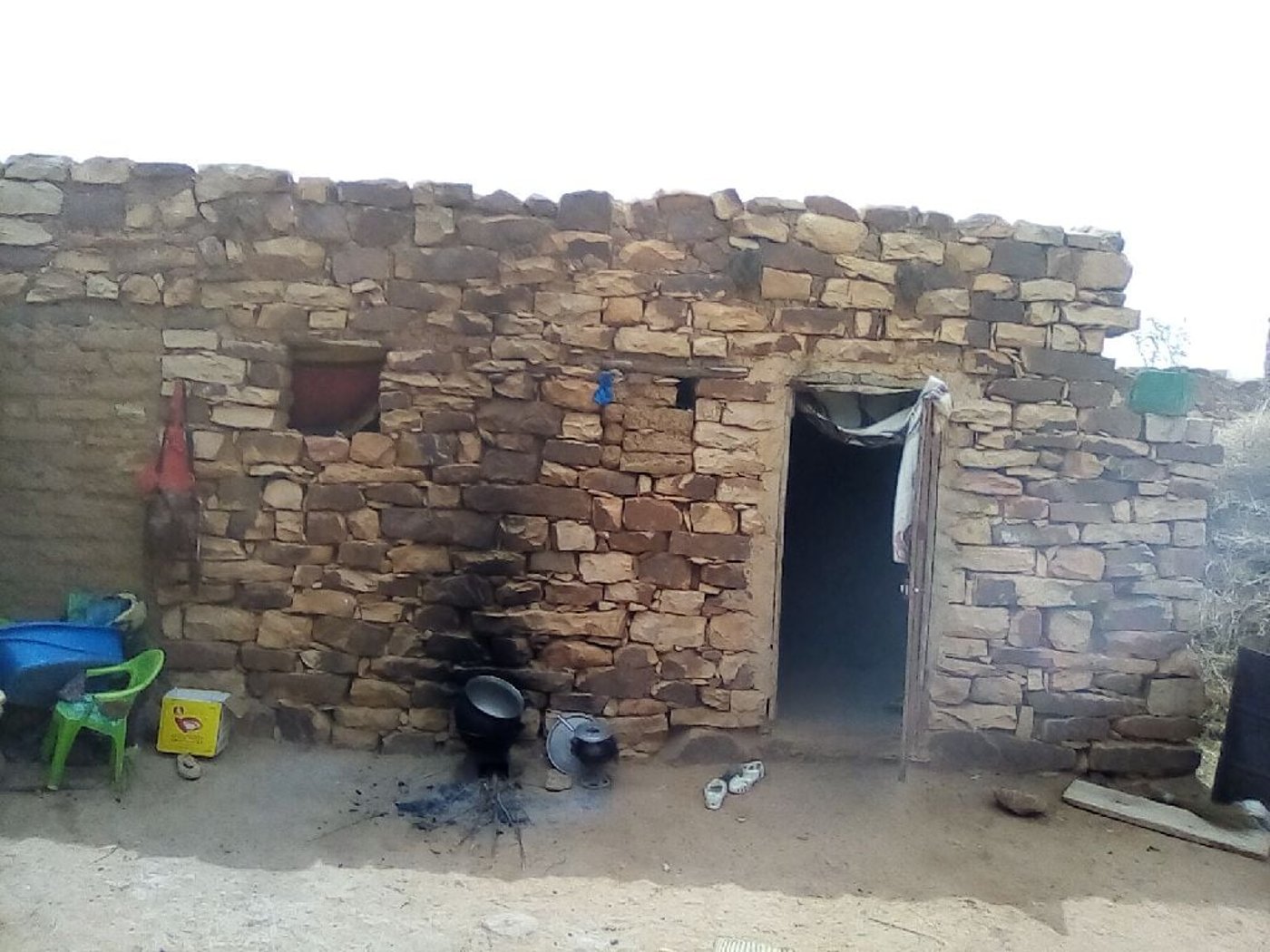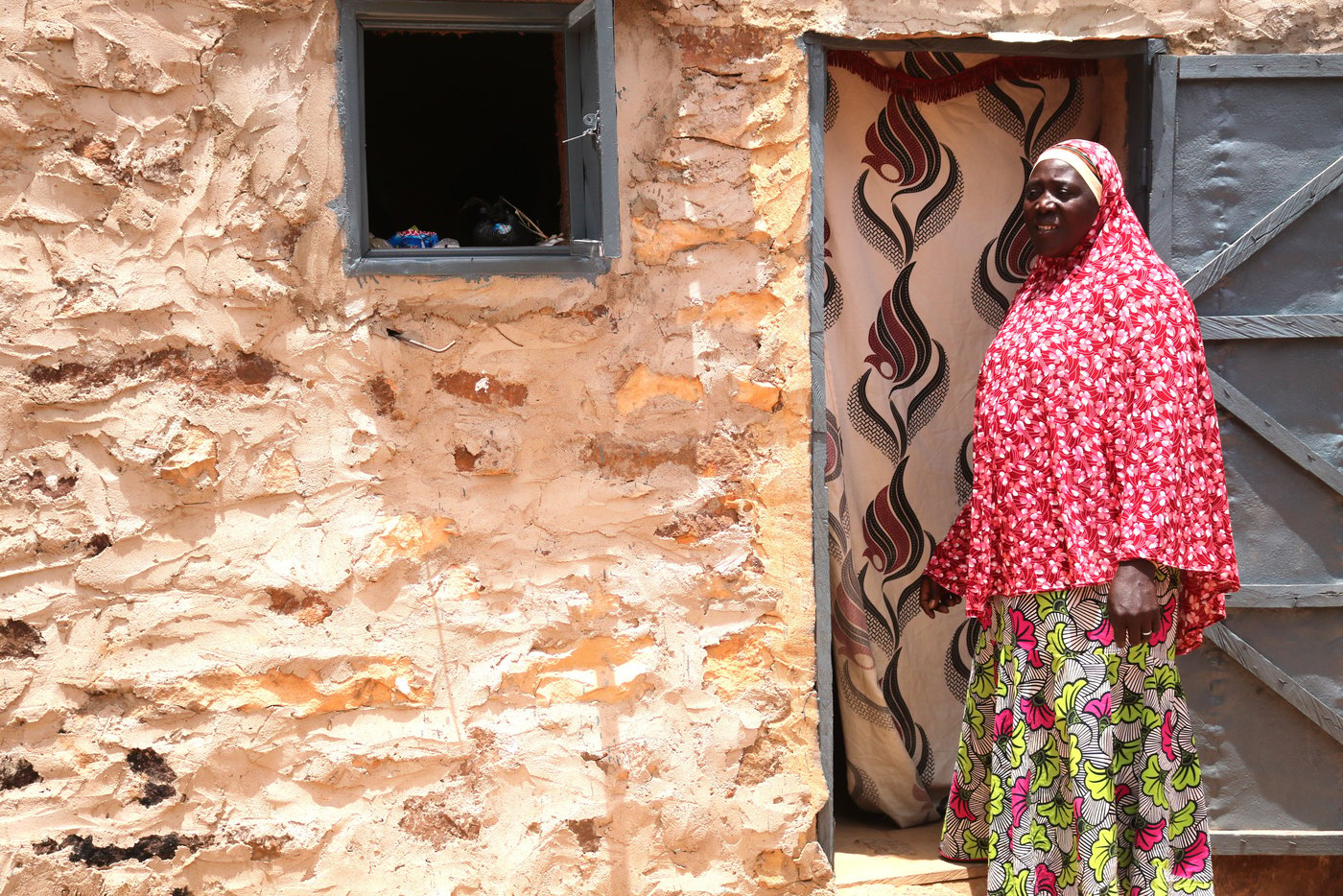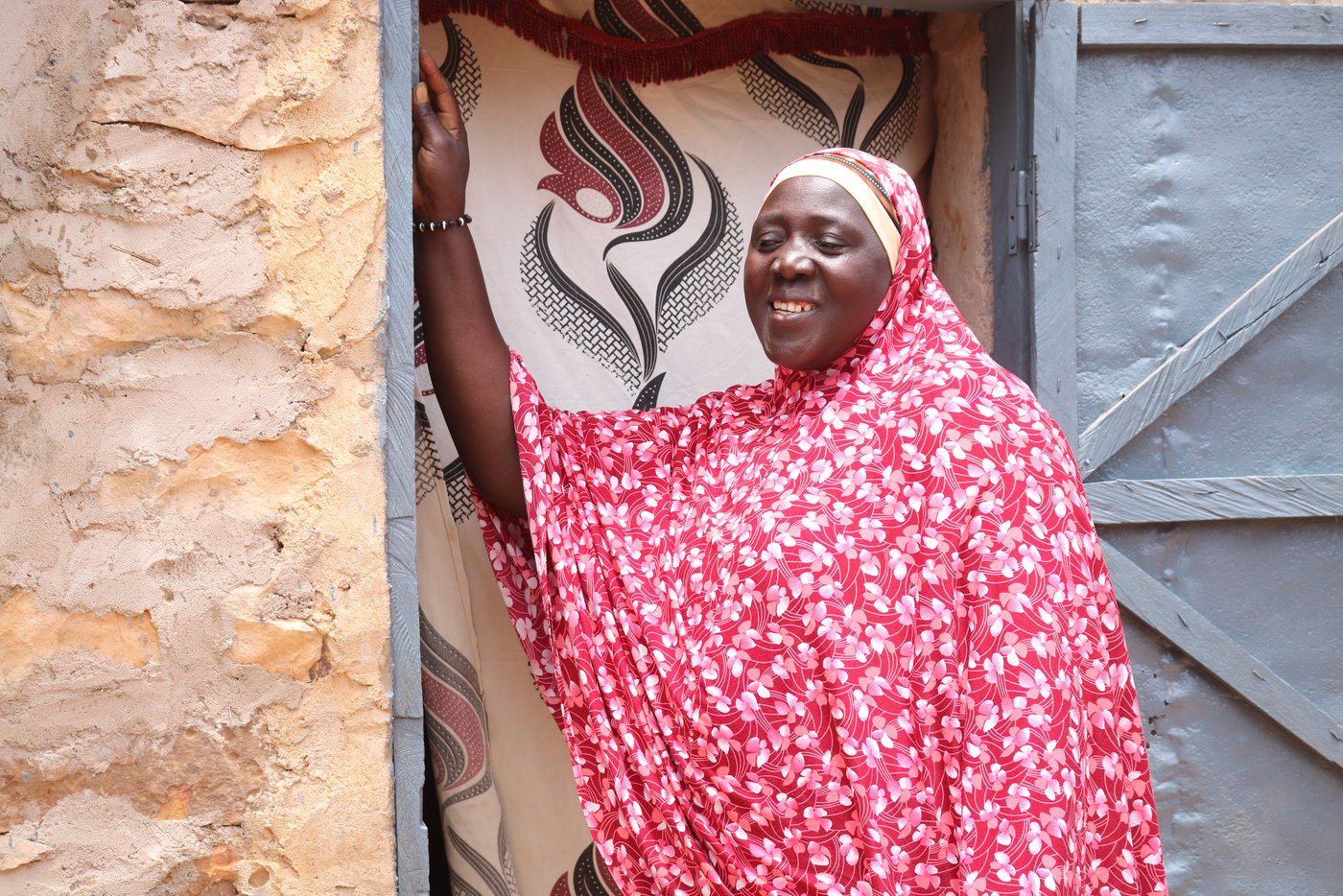She often thinks back on all that she has lost. In her village, she used to help her husband with the farm work, and part of the harvest was sold.
“I couldn’t even harvest the peanuts I had planted,” Mariam recalls. “Selling part of the crop was my main source of income. I lost everything.”
Mariam had never experienced so much turmoil and violence before. In addition to the loss of her home and possessions, she was deeply affected by the death of several loved ones during the attacks.
Alongside many others, Mariam walked for miles with her children to escape the violence, eventually finding refuge in the village of Doucombo. Over a hundred people arrived in the village. That first night was filled with fear. “We slept in the courtyard of the village chief. Our hearts were heavy,” she says.
Moved by their plight, the village chief rallied the community to offer support. Some displaced families, including Mariam’s, were given temporary shelter in vacant homes.

However, the houses were in a state of severe disrepair and barely able to withstand the harsh climate. The situation was very difficult for Mariam, her husband and their seven children. “The house could have collapsed at any moment. Rainwater flooded it. We were terrified,” Mariam shares.
Mariam was not the only one facing these challenges. Just a few steps from her home, we find Kadia, a 74-year-old woman. Like Mariam, she fled the violence perpetrated against her village. Her shelter was also damaged and rainwater had flooded her home.
“I stood for hours, day and night, with my grandchildren until the rain stopped, placing buckets to catch the water,” she says.
With funding from the Regional Humanitarian Fund for West and Central Africa (FHRAOC), the Norwegian Refugee Council (NRC)’s Shelter programme supported 1,546 people through a project called “Integrated Responses to the Humanitarian Needs of People Affected by the Crisis in Bandiagara and Douentza”.

Through this project, the houses of Mariam and Kadia, as well as several other households, have been rehabilitated. “Our house will no longer be flooded during the rainy season after this rehabilitation. We live better and safely in the house,” Mariam says with relief.
Kadia adds: “I wanted to live with dignity. Now I do.”
Today, Mariam and Kadia, along with their families, are protected and at peace in their homes – proof that safe shelter is not just a necessity, but a foundation for rebuilding lives.
Sign up to our newsletter to read more stories from around the world.


